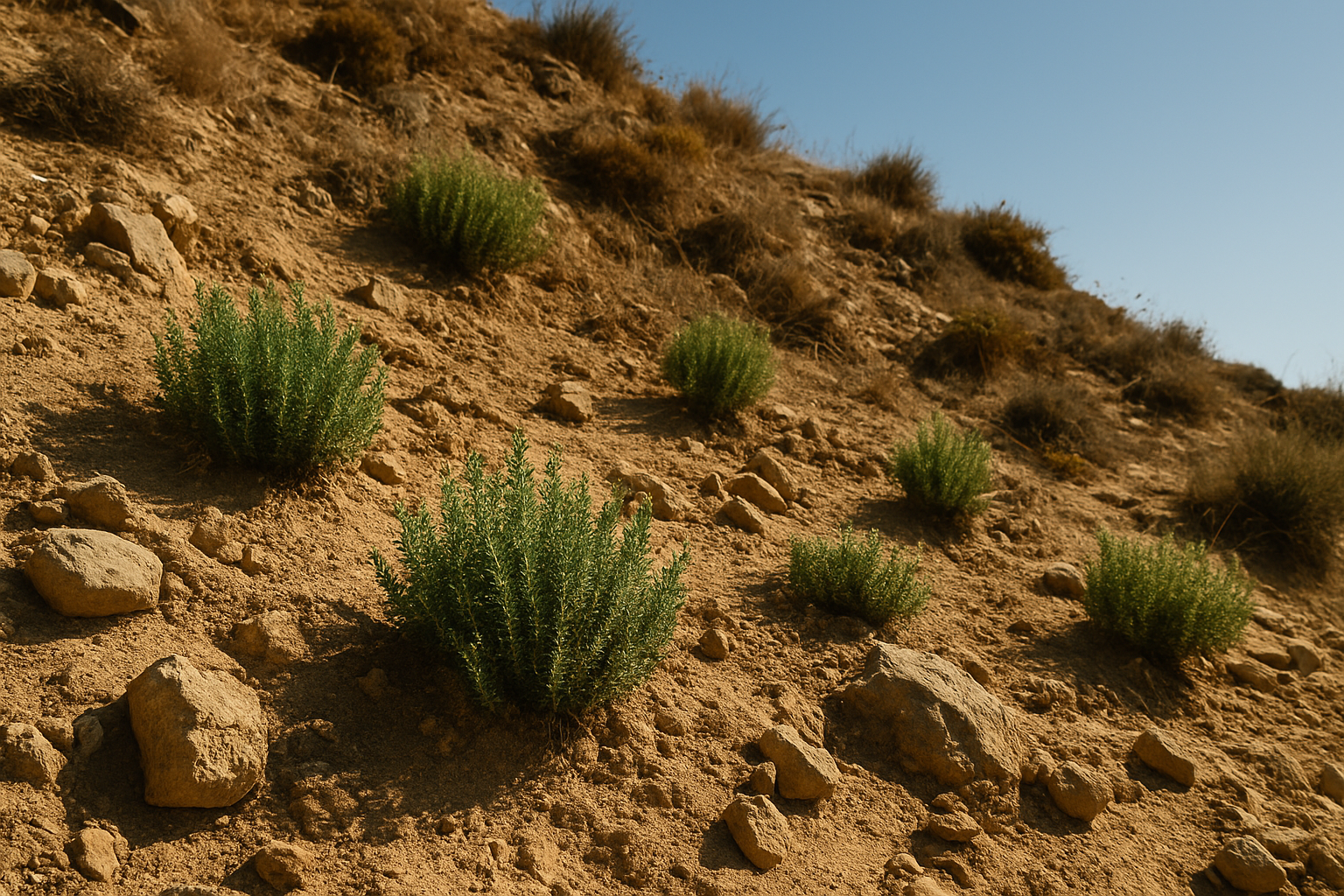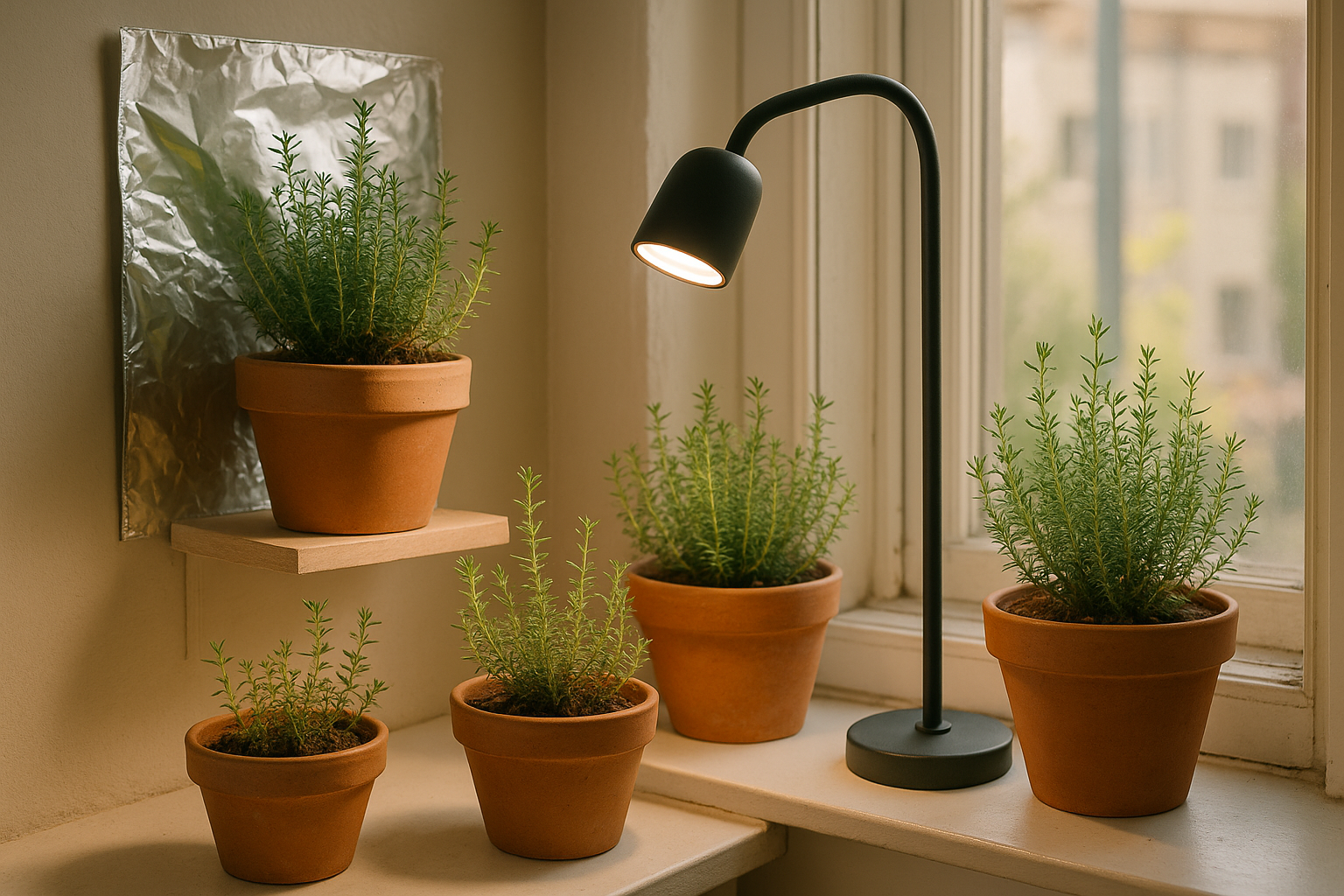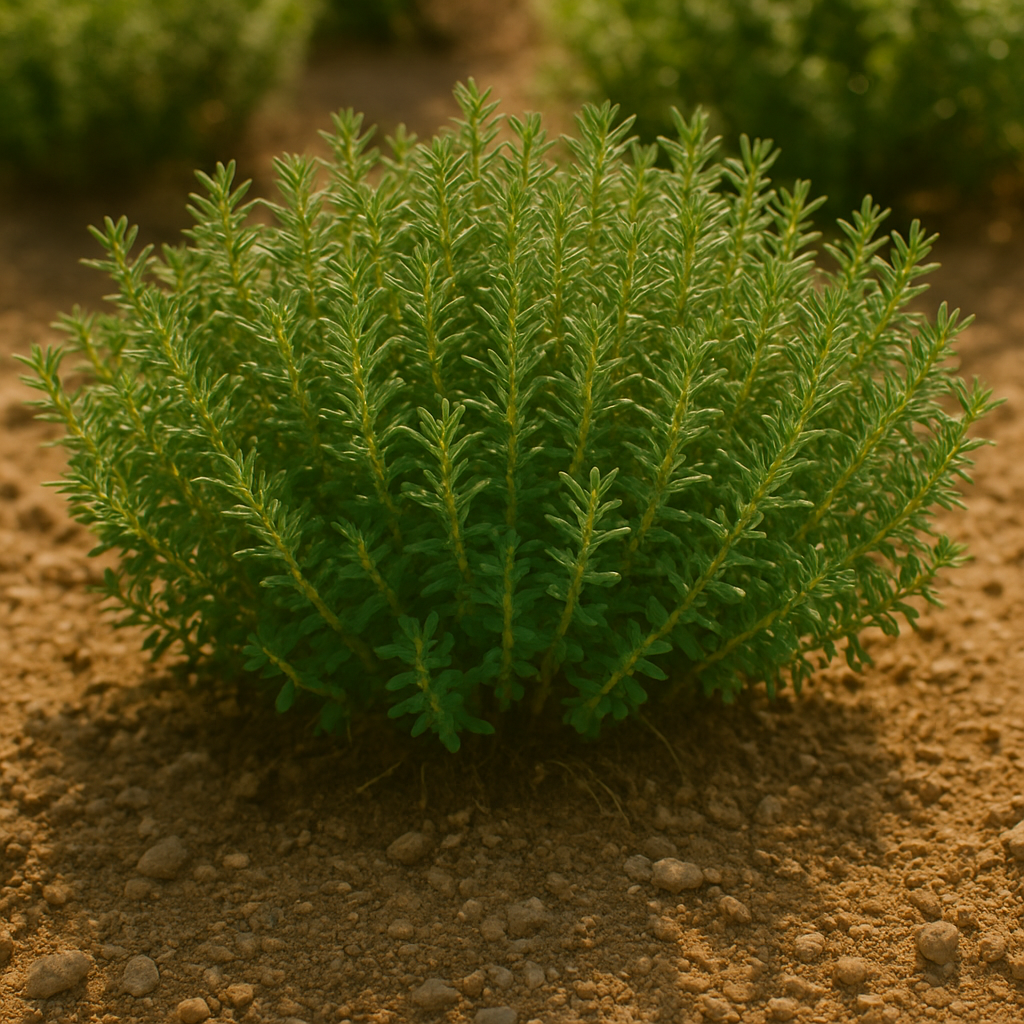Does Thyme Need Full Sun or Shade?
Thyme thrives best in full sun, a fact supported by both scientific studies and horticultural experts. Ideally, thyme should receive at least six hours of direct sunlight each day. Sunlight is essential because it drives photosynthesis, the process that helps the plant produce energy, grow strong, and develop its signature intense flavor.
In bright, sunny spots, thyme plants stay compact, develop lush foliage, and produce more essential oils—the compounds responsible for their aromatic, earthy scent and taste that make them kitchen favorites.
On the other hand, growing thyme in too much shade can cause several problems. The plants may become leggy and weak, stretching unnaturally toward any available light. This results in thin, sparsely leaved stems that can flop over, making the plant less attractive and more susceptible to disease. Additionally, shaded thyme tends to lose much of its robust flavor and fragrance, as fewer essential oils are produced under low-light conditions.
In real-world gardens, plant thyme in the sunniest spot available, such as a south-facing border, raised bed, or even a bright windowsill if grown indoors. While a little afternoon shade is usually fine in extremely hot climates, consistent full sun is generally best. Avoid tucking thyme into shady corners or under taller plants, as this will compromise both its health and culinary quality. Proper sunlight is truly the secret to thriving, flavorful thyme.
Understanding Thyme’s Native Habitat

Thyme thrives in the rugged, sun-soaked landscapes of the Mediterranean, often clinging to dry, rocky hillsides where rain is scarce and the soil drains quickly. This tough little herb has evolved to handle intense sunlight and long periods without water, which explains why it’s so drought-tolerant and low-maintenance in the garden.
If you want thyme to flourish at home, try to mimic its native conditions: pick the sunniest spot you can find and plant it in well-draining soil—think sandy or gritty mixtures instead of dense, moisture-holding dirt. Avoid overwatering, as thyme’s roots resent “wet feet.” Many gardeners even grow it in raised beds or containers with drainage holes to further prevent soggy soil.
By giving thyme the warm, sunny exposure and dry footing it’s used to, you’ll keep the plant happy and encourage a bounty of aromatic leaves for cooking all season long.
How Much Sun Thyme Really Needs
Thyme thrives best when it receives at least 6 hours of direct sunlight each day, with 6 to 8 hours being the sweet spot for optimal growth. Outdoors, plant your thyme in a sunny, well-drained spot—think of areas that get full sun nearly all day, like a south-facing garden bed.
If thyme doesn’t get enough sunlight, it tends to grow leggy, with weaker stems and fewer fragrant leaves. The flavors can also become less intense, meaning you won’t get the robust taste you expect from your homegrown herbs.
On the flip side, while thyme is sun-hardy and can tolerate lots of light, excessive, relentless midday sun—especially in very hot climates—may dry it out or cause the leaves to scorch. Mulching and occasional afternoon shade can help protect your plants in extreme heat.
For indoor growers, south- or west-facing windows are ideal since they get the most intense light during the day. Place your thyme pot as close to the window as possible, and if shadows on your windowsill aren’t strong or you notice slow, pale growth, supplement with a small grow light for a few hours. Rotate indoor pots every week to keep growth even.
Remember: more light usually means livelier, tastier thyme, but monitor for signs of stress and adjust location as needed for the healthiest, bushiest plants.
Growing Thyme in Less-Than-Ideal Light

Growing thyme in less-than-ideal light can be a challenge, but with a few practical adjustments, you can still enjoy fresh herbs from your garden or windowsill. Start by choosing the brightest spot possible—while thyme prefers full sun, it can tolerate partial shade if you maximize the available light.
Place containers near south- or west-facing windows indoors, or where dappled sunlight reaches in gardens. To boost natural light, set reflective surfaces like white stones, mirrors, or even aluminum foil around your thyme plants so more sunlight bounces onto the foliage throughout the day.
In outdoor settings with persistent shade, try moving potted thyme to sunnier spots as the sun shifts, or elevate pots onto shelves or benches to catch stray rays. If natural light is extremely limited, supplement with a small LED grow light placed 6 to 12 inches above the plants for about 12 to 16 hours per day—these are energy-efficient and easy to use even in tiny spaces.
Watch for early signs of light stress, such as weak, spindly stems, pale or yellowing leaves, and slowed growth; these indicate your thyme needs more light. If you notice these symptoms, adjust your placement or lighting setup quickly.
With attention and a few simple tweaks, thriving thyme is possible even without perfect sunlight.
Soil, Water, and Other Environmental Factors
Thyme thrives in full sun but can tolerate partial shade—provided its other needs are met. The plant prefers well-draining, sandy or loamy soil, which complements its sensitivity to excess moisture, especially in lower light.
Good drainage is critical: in shaded or humid conditions, soils stay wet longer, and roots struggle to dry out, quickly leading to root rot. That’s why using a potting mix with plenty of sand or perlite is essential if your thyme doesn’t get a lot of direct sun.
When it comes to watering, less is usually more. Let the top inch of soil dry out thoroughly before watering again, and remember that thyme grown indoors or in partial shade will dry out slower than plants outside in full sunlight. One of the most common mistakes is increasing water to compensate for slower growth in shade, which only makes matters worse by suffocating roots and encouraging fungal problems.
If you notice yellow leaves or a musty smell, that’s a sign the roots are staying too wet. Conversely, nutrient-rich but heavy soils can actually trap water—so aim for a free-draining mix and resist over-fertilizing.
Ultimately, healthy thyme needs enough light, a “lean” and airy soil, moderate humidity, and an attentive approach to watering—especially when conditions aren’t ideal.
Troubleshooting Common Thyme Growing Problems
Improper light exposure is a frequent culprit behind thyme troubles, often leading to leggy growth, diminished flavor, or even root rot. If your thyme plant looks stretched out and sparse, it’s likely craving more sunlight—try relocating it to a spot that receives at least six hours of direct light daily, such as a bright windowsill or an unobstructed area in your garden.
When thyme doesn’t get enough sun, its leaves can lose their robust flavor, so increasing light exposure is key. If you notice leaves turning pale or the plant appearing limp, prune back overgrown stems to encourage bushier, healthier growth and allow more light to reach the center.
Root rot is another common issue when thyme is kept in dim, damp environments; the lack of sunlight prevents the soil from drying out quickly, creating a breeding ground for disease. To fix this, make sure your thyme is potted in well-draining soil and consider replanting in a container if your garden spot stays too shady or soggy.
Regularly check for and remove any dead, soggy stems to keep air flowing and discourage rot. Remember, thriving thyme needs bright light, good air circulation, and quick-draining soil—so if your plant is struggling, a simple move or some strategic pruning can often set it back on the right path.
Quick Tips for Thriving Thyme Year-Round
To keep your thyme thriving throughout the year, focus on a few essential care points. First, ensure your plant gets plenty of sun—at least six hours daily—whether it’s on a sunny windowsill indoors or in a bright outdoor spot. If light is limited, consider supplementing with a grow light.
Thyme likes its soil to dry out between waterings, so check moisture often; water only when the top inch feels dry to avoid root rot. Good drainage is key, so use pots with holes and a sandy, well-draining mix.
Prune thyme regularly, snipping off the top growth to encourage bushier plants—just avoid cutting more than a third at once. During cooler months or if your indoor air is dry, space out waterings even more, as thyme hates sitting in soggy soil.
In winter, move pots away from cold drafts or heat sources, and in summer, watch for rapid drying in the heat. Each home’s conditions can differ, so pay attention to how your thyme responds.
If leaves droop or turn yellow, adjust your watering, sun exposure, or airflow accordingly. Don’t hesitate to experiment; your observations and small tweaks will help you discover what keeps your thyme happiest all year long.
